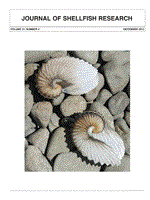Restocking and potential stock enhancement of natural abalone stocks by seeding hatchery-reared juvenile abalone into suitable habitat is currently being investigated or implemented in a number of countries, including Japan, Australia, New Zealand, Mexico, and South Africa. A series of experiments has been conducted to investigate the feasibility and development of the technology required to do this in the Sultanate of Oman. Wild seed were collected between Mirbat and Ras Atian on the Dhofar coast and kept in a hatchery for 7 wk. Qualitative and observational data were used to develop seeding site selection criteria and a seeding density of 10 juveniles/m2. The juveniles were relocated and seeded in 18 different sites spread over a distance of 72 km. Sites selected with an abundance of boulders with a diameter of less than 50 cm yielded the highest recovery rates. Different categories of habitat availability and selection by seeded juveniles for specific habitat categories varied significantly among sites, which was reflected in the range of recovery rates. Boulder habitats less than 50 cm in diameter supported the most recovered juveniles (P = 0.002 and P = 0.005). Survival rates over a period of 30, 60, and 90 days ranged from 0%–80% and proved highly site specific (P = 0.04). A positive correlation was found between average seed size and increased recovery rates (P = 0.015, R2 = 0.25). Dispersal was limited in sites with high recovery rates. Site selection was shown to be vital. A simple seeding mechanism comprising a PVC tube proves successful as an alternative to seeding by hand.
How to translate text using browser tools
1 August 2013
Investigating the Translocation and Seeding of Wild Haliotis mariae Wood, 1828, in the Sultanate of Oman
Schalk De Waal,
Mohammed Balkhair,
Ali Al-Mashikhi,
Salem Khoom
ACCESS THE FULL ARTICLE

Journal of Shellfish Research
Vol. 32 • No. 2
August 2013
Vol. 32 • No. 2
August 2013
dispersal
Haliotis mariae
Oman
restocking
seeding densities
seeding mechanisms
seeding methodology




